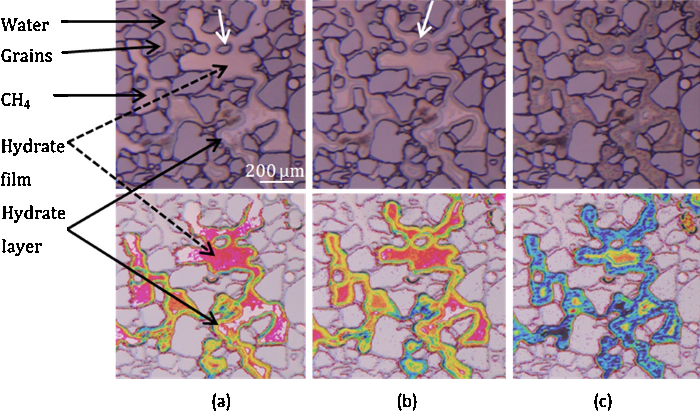Royal Irish Academy Charlemont grant awarded to Dr Srikumar Roy
Recent News
- Neoma Mass Spectrometer Commissioning
- Applied Geophysics Course EM-31, ERT & GPR Surveys
- IRC Research Ally Prize
- New instruments for high precision land surveying arrive at UCD
- Neoma MC-ICP-MS delivery
- Hook Head Peninsula Fieldtrip
- Next Generations Explorers Award
- Software Agreement with Baker Hughes
- Maeve Boland elected Fellow of the Geological Society of America
- New faculty - Dr Kara English
- New faculty – four Ad Astra Fellows
- Dr Laia Comas-Bru WCRP/GCOS Data Prize
- Mass extinction - learning from the past for the future
- Formation of platinum-group ore deposits & sub-volcanic intrusions
- UCD’s School of Earth Sciences collaboration with Irish-based NGO Self Help Africa (SHA)
- Swampy rainforests in Antarctica dated to the mid-Cretaceous
- Professor Frank McDermott Nature Publication
- The Blue Book Project
- 2019
- 2018
- 2017
- Dr Aggeliki Georgiopoulou IT Interview
- Sandbox Simulation of a Tectonic Collision Zone
- Dr Aggeliki Georgiopoulou sets sail on IODP exp 372
- Four Projects Awarded GSI Funding
- Dr Shane O'Reilly Preen Glands
- Dr Steven Hollis awarded GSI Grant
- Dr Aggeliki Georgiopoulou awarded a Fulbright-GSI Scholarship
- Prof John Walsh awarded William Smith Medal
- Dr Laia Comas Bru awarded EAG Ambassador Award
- Dr Torremans Horizon 2020 Grant
- UCD SPE Student Chapter Lecture by Dr John OSullivan
- Recently completed PhD student Eva Eibl has three papers published
- Invitation to sail on IODP exp 372 for Dr Aggeliki Georgiopoulou
- Royal Irish Academy Charlemont grant awarded to Dr Srikumar Roy
- Royal Irish Academy Charlemont grant awarded to Dr Steven Hollis
- 2016
Royal Irish Academy Charlemont grant awarded to Dr Srikumar Roy
Dr Srikumar Roy (iCRAG Postdoc Research Fellow) has been awarded a Royal Irish Academy Charlemont grant for his project entitled 'Pore-level monitoring of gas hydrate formation in sediment cores and its effect on electrical resistivity and sonic velocity' in collaboration with the University of .
Project description:
Identification and quantification of natural gas hydrate (NGH) from geophysical (seismic and borehole) data is essential to do an appropriate resource assessment of the NGH reserves distributed worldwide. Downhole measurements of electrical resistivity and sonic velocity along with seismic data are used to derive NGH saturations based on Archie’s equation and combination of Wyllie’s and Wood’s time average relation. However, it is important to understand the influence of the various types of NGH-bearing sediments (pore-filling, frame-building, cementation), NGH saturation as well as sediment microstructure and grain size distribution on the physical properties, being recorded in the geophysical data. Hence, laboratory experiments with artificially produced NGH bearing sediments play a vital role in such investigations of physical sediment properties. This will further facilitate the accurate integrated interpretation of seismic and borehole measurements, and hence more realistic estimates of NGH reservoirs in Ireland and other parts of the globe.
NGH appears to form when upward migrating methane-charged pore water passes into a suitable geological host strata within the NGH stability zone (GHSZ). Although NGH can form anywhere within the GHSZ, its concentration near the base of the GHSZ suggests the supply of reactants has been from subjacent sources. Geophysical and geochemical indications of fluid migration and leakage in the continental margin west of Ireland have been made inside and outside of the theoretically modelled GHSZ. The GHSZ typically reaches as deep as 700 m below seafloor in the western offshore basins of Ireland. Fluid flow / leakage evidence at the seafloor and subsurface, in combination with the theoretical GHSZ thickness model indicate that NGH dissociation could be one of the causes for these seepage features. An extensive geophysical dataset comprising of industry quality 2D / 3D seismic data along with well data is available for the screening of NGHs in Irish waters. However, experimental work on sediment cores recovered from the GHSZ of Irish basins, will help in better interpretation of the seismic and well data, when supplemented with appropriate seismic velocities and resistivity values in artificially produced NGH bearing sediments.
Through funding from the Royal Irish Academy, Dr Roy will visit the Department of Physics and Technology in the University of Bergen, Norway, where he will perform the following research objectives using their experimental facility:
1) To study the effect of grain size distribution and sediment microstructure of the cores collected from Irish offshore region, on both the formation and dissociation of natural gas hydrates. NGH production techniques could be investigated, and rate and pattern of dissociation could be monitored using the MRI facility at the UiB.
2) To study the effect of natural gas hydrate (NGH) formation technique on the resistivity estimation method (Archie’s law) of NGH saturation.
3) To study the influence of NGH pore saturation on P- and S- wave velocity measurements, subjected to isotropic loading and unloading, and also to investigate the effects of these measurements on two types of NGH formation methods, as well as on the various sediment types from Irish Basin.

Figure (Hauge et al., 2016): Growth patterns during methane hydrate formation at 8 MPa and 4.4?C. Images a–c represent 2.8, 3.5 and 8.8 s after hydrate formation was observed. The lower images visualize spatial hydrate growth (i.e. variation in grayscale intensity during formation) for the upper image sequence. Warm colors indicate thinner hydrate films (purple/red), and cold colors represent thicker hydrate layers (yellow/blue). Hydrate grows thicker over time from an initial thin film in the pore body. As seen in image a, the hydrate film has provided a growth site on a water-wet grain surrounded by gas (white arrow). Resolution is 0.5 pixels/ µm.
Hauge, L.P., Gauteplass, J., Høyland, M.D., Ersland, G., Kovscek, A., Fernø, M.A., 2016. Pore-level hydrate formation mechanisms using realistic rock structures in high-pressure silicon micromodels. International Journal of Greenhouse Gas Control 53, 178-186.
More information on Charlemont grants can be found (opens in a new window)here.